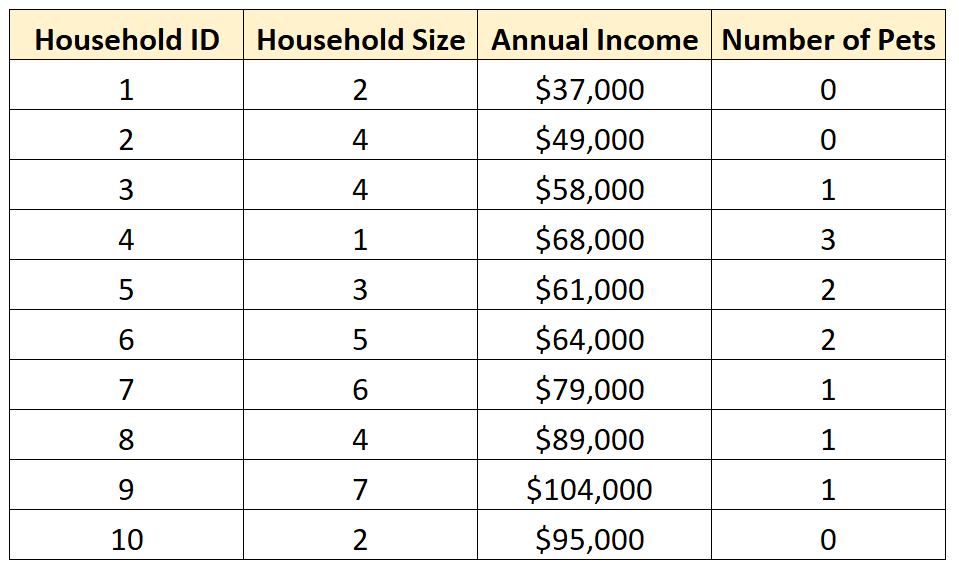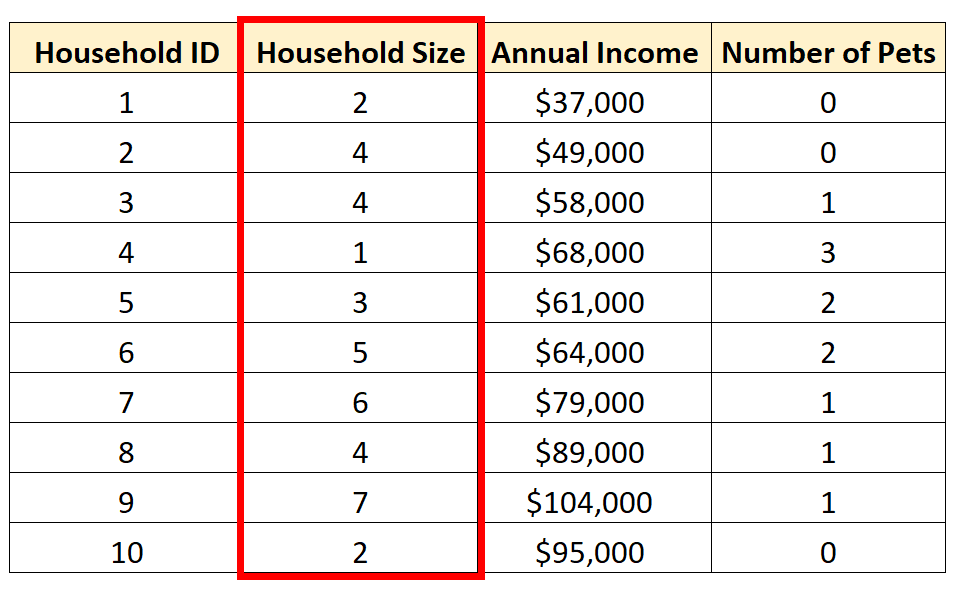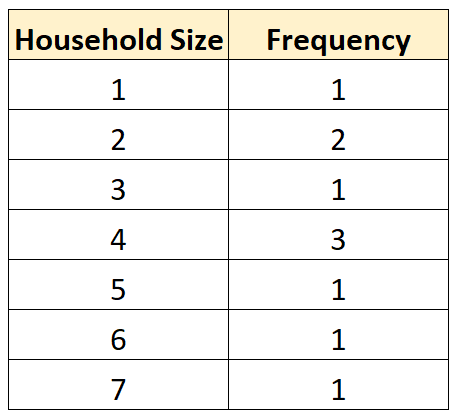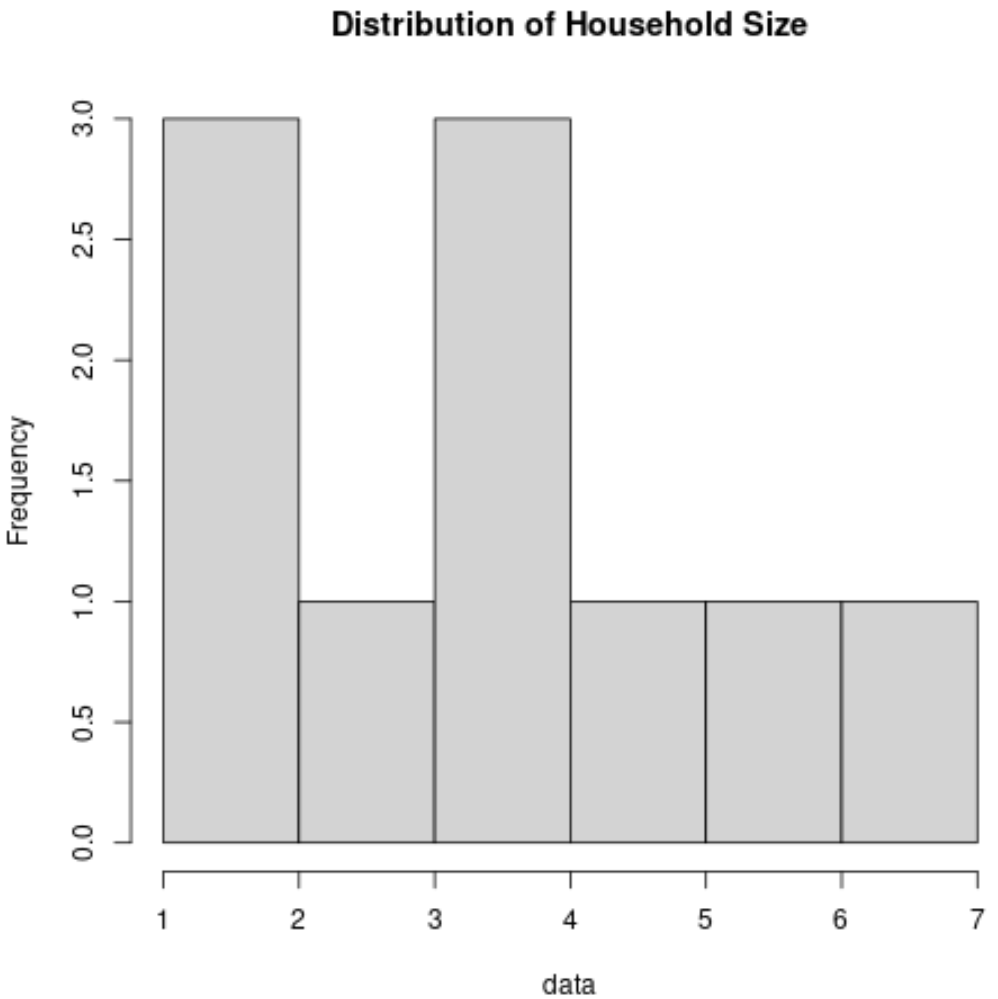The term univariate analysis refers to the analysis of one variable. You can remember this because the prefix “uni” means “one.”
The term multivariate analysis refers to the analysis of more than one variable. You can remember this because the prefix “multi” means “more than one.”
There are three common ways to perform univariate analysis:
1. Summary Statistics
- We can calculate measures of central tendency like the mean or median for one variable.
- We can also calculate measures of dispersion such as the standard deviation for one variable.
2. Frequency Distributions
- We can create a frequency distribution, which describes how often each value occurs for one variable.
3. Charts
- We can create charts like boxplots, histograms, density curves, etc. to visualize the distribution of values for one variable.
There are two common ways to perform multivariate analysis:
1. Scatterplot Matrix
- We can create a scatterplot matrix, which allows us to visualize the relationship between each pairwise combination of variables in a dataset.
2. Machine Learning Algorithms
- We can use a supervised learning algorithm to fit a model like multiple linear regression that quantifies the relationship between multiple predictor variables and a response variable.
- We can also use an unsupervised learning algorithm like principal components analysis to find structure and relationships between multiple variables in a dataset at once.
The following examples show how to perform both univariate and multivariate analysis with the following dataset:

Note: When you analyze exactly two variables, this is referred to as bivariate analysis.
Example: How to Perform Univariate Analysis
We could choose to perform univariate analysis on any of the individual variables in the dataset.
For example, we may choose to perform univariate analysis on the variable Household Size:

We can calculate the following measures of central tendency for Household Size:
- Mean (the average value): 3.8
- Median (the middle value): 4
These values give us an idea of where the “center” value is located.
We can also calculate the following measures of dispersion:
- Range (the difference between the max and min): 6
- Interquartile Range (the spread of the middle 50% of values): 2.5
- Standard Deviation (an average measure of spread): 1.87
These values give us an idea of how spread out the values are for this variable.
We can also create the following frequency distribution table to summarize how often different values occur:

We can also create a boxplot to visualize the distribution of values for household size:

Alternatively, we could create a histogram to visualize the distribution of values:

By calculating these metrics and creating these charts, we can gain a strong understanding of how the values are distributed for the variable Household Size.
Example: How to Perform Multivariate Analysis
Once again suppose we have the same dataset:

One simple form of multivariate analysis we could perform on this dataset is to create a scatterplot matrix, which is a matrix that shows a scatterplot for each pairwise combination of numeric variables in the dataset.
We could create this type of matrix to visualize the relationship between household size, annual income, and number of pets all at once.
Resource: Check out this tutorial to see how to create a scatterplot matrix in R.
Another way to perform multivariate analysis on this dataset would be to fit a multiple linear regression model. For example, we could create a regression model that uses household size and number of pets to predict annual income.
Resource: Check out this tutorial to see how to perform multiple linear regression in R.
Yet another way to perform multivariate analysis on this dataset would be to perform principal components analysis, which allows us to find an underlying structure in the dataset.
Resource: Check out this tutorial to see how to perform principal components analysis in R.
Conclusion
Here’s a quick summary of this article:
- Univariate analysis is the analysis of one variable.
- Multivariate analysis is the analysis of more than one variable.
- There are various ways to perform each type of analysis depending on your end goal.
- In the real world, we often perform both types of analysis on a single dataset.
- Univariate analysis allows us to understand the distribution of values for one variable while multivariate analysis allows us to understand the relationship between several variables.